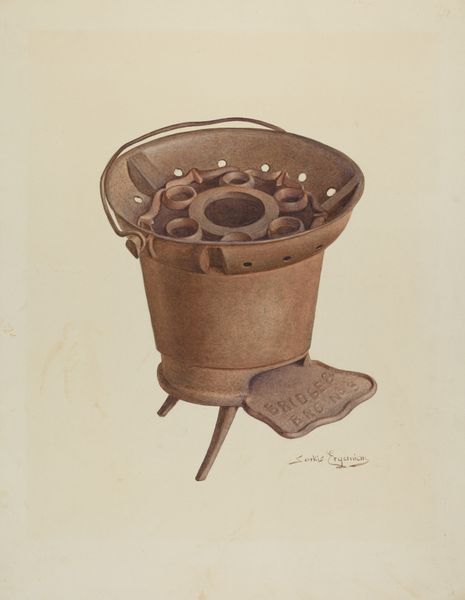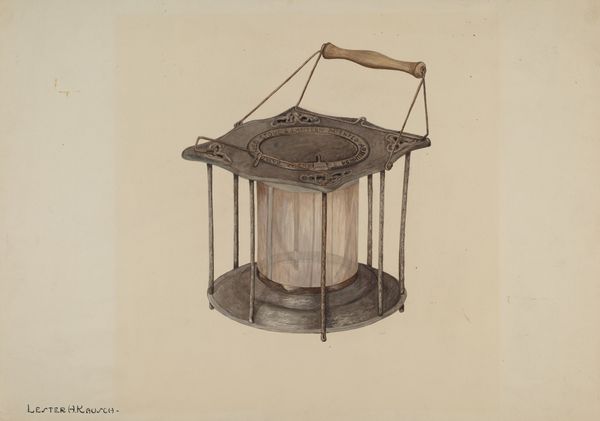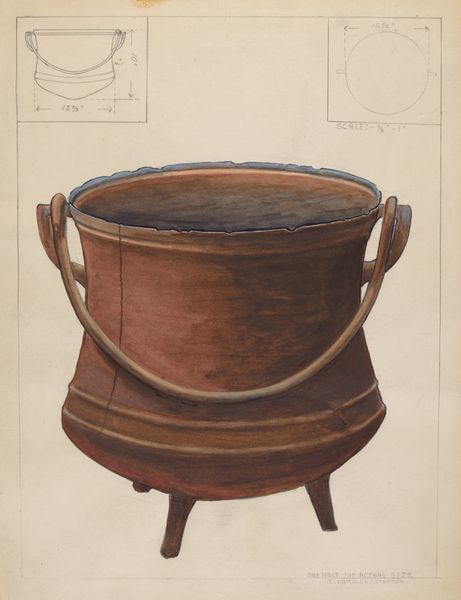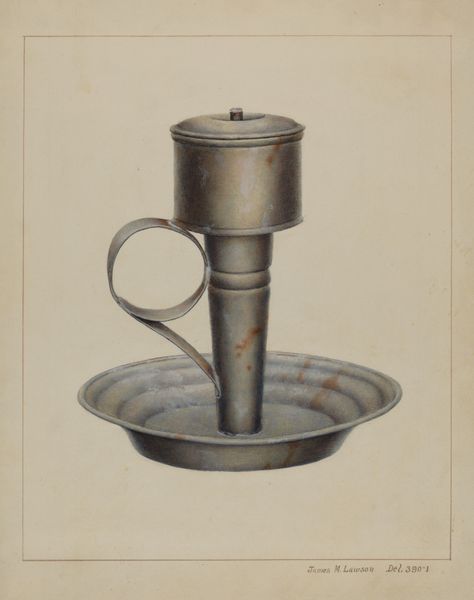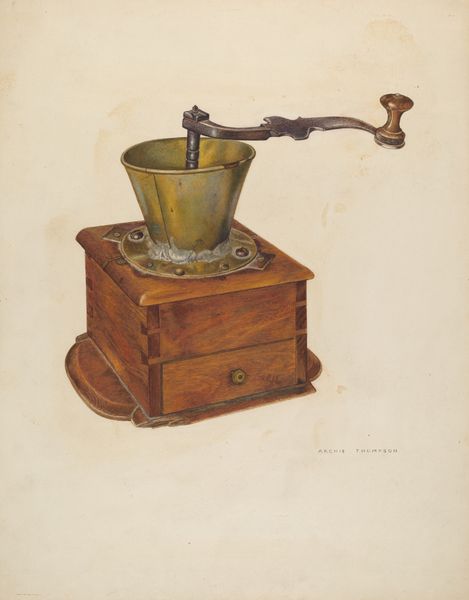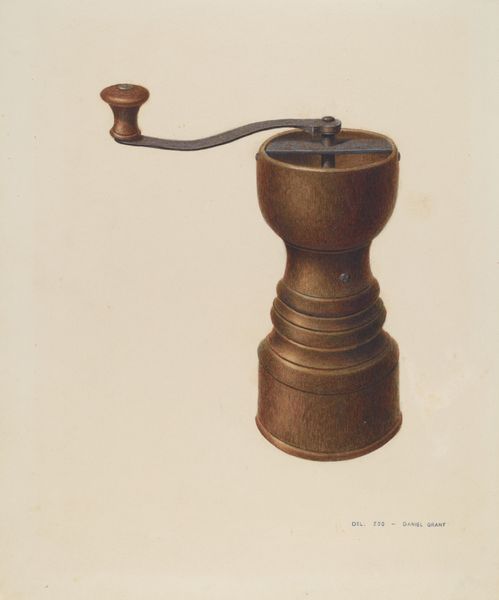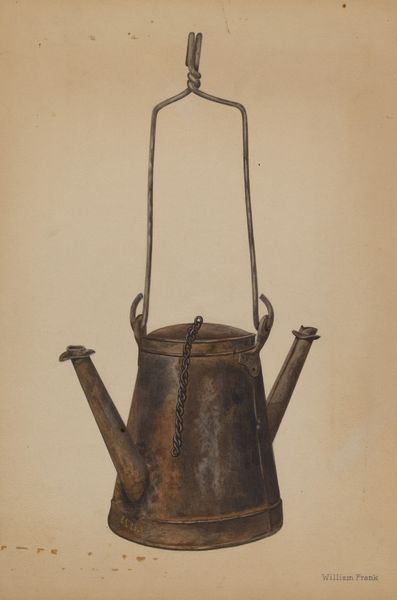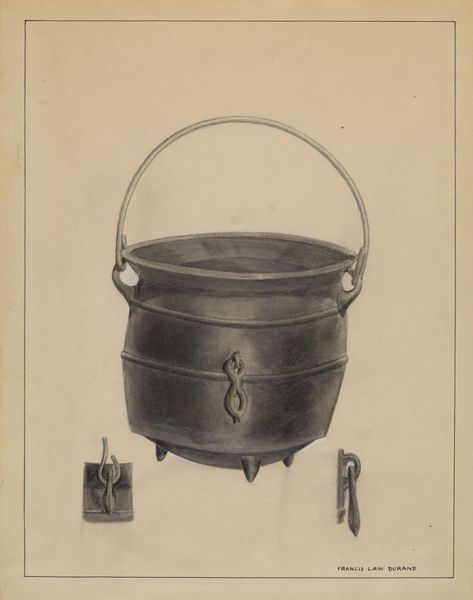
drawing
#
drawing
#
possibly oil pastel
#
oil painting
#
portrait reference
#
acrylic on canvas
#
animal drawing portrait
#
portrait drawing
#
portrait art
#
watercolor
#
fine art portrait
#
digital portrait
Dimensions: overall: 27.9 x 22.9 cm (11 x 9 in.)
Copyright: National Gallery of Art: CC0 1.0
Editor: So, this is John Price's "Charcoal Stove," made around 1939, a drawing. I find its simple presentation pretty powerful. It's just...a stove. But the detail makes it more than a functional object, right? What do you see in this piece, beyond the depiction of a commonplace object? Curator: I see a stark commentary on domesticity and labor, particularly within the context of the Great Depression when this was made. What kind of access would different families have had to such a stove, what fuels would they burn? Consider whose labor sustained even this simple means of heating and cooking, and under what conditions? Editor: So, the object itself speaks to economic disparities and class structures? The artist isn’t just showing us a stove. Curator: Exactly. Think about gender, too. Who typically used such a stove? The materiality of the piece is also worth noting—a drawing, suggesting perhaps a remove from the actual, tactile experience of using such a device, or a limited access. Do you see any artistic strategies to subtly support this? Editor: Well, the tight, almost clinical rendering highlights its form, but the muted palette denies it any glamour. It emphasizes function over beauty. Maybe that is a reflection on the relentless demands made upon the working class at the time, specifically women as homemakers? Curator: Precisely. And those demands often disproportionately affected women and people of color. Now, does knowing this influence how you perceive the work? Editor: Absolutely. I initially saw it as a still life, but now I understand it as a symbol of a particular historical moment and its social realities, and about who had access to even simple domestic tools and who didn't. Curator: I think that’s key: how everyday objects, when examined critically, can reveal complex layers of social history and power dynamics.
Comments
No comments
Be the first to comment and join the conversation on the ultimate creative platform.
